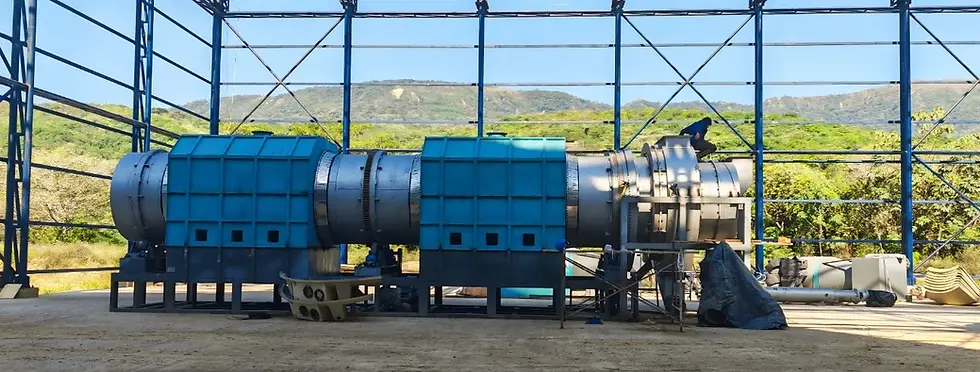Oil Yield in Plastic Pyrolysis: Understanding PE, PP, and PS Conversion to Fuel
- lee784287
- 8月26日
- 讀畢需時 2 分鐘
The global plastic waste crisis has driven researchers and industries to explore sustainable recycling technologies. Among these, plastic pyrolysis—the thermal decomposition of plastics in the absence of oxygen—stands out as a promising method to convert non-recyclable plastics into liquid fuel oil, gas, and char.
One of the most important factors in evaluating pyrolysis efficiency is the oil yield. Different types of plastics produce different amounts and qualities of oil. In this article, we focus on three of the most common waste plastics: PE (polyethylene), PP (polypropylene), and PS (polystyrene).
What Is Oil Yield in Pyrolysis?
Oil yield refers to the percentage of liquid oil obtained from pyrolyzing a given weight of plastic. For example, if 100 kg of plastic waste produces 70 kg of pyrolysis oil, the oil yield is 70%.
The oil yield depends on several factors:
Type of plastic (polymer structure and composition)
Reaction temperature
Heating rate
Reactor design
Use of catalysts
Pyrolysis of PE, PP, and PS
1. Polyethylene (PE)
Sources: Plastic bags, bottles, packaging films
Oil Yield: Typically 60–80%
Characteristics: Produces high amounts of liquid fuel with long-chain hydrocarbons. The oil is similar to diesel and kerosene fractions.
2. Polypropylene (PP)
Sources: Food containers, bottle caps, automotive parts
Oil Yield: Around 65–85%
Characteristics: Produces high-quality oil with gasoline-like fractions. PP pyrolysis oil often contains more branched hydrocarbons, making it suitable as a transport fuel.
3. Polystyrene (PS)
Sources: Disposable cups, packaging foam, electronics casings
Oil Yield: Can reach 70–90%
Characteristics: Produces a high proportion of liquid oil rich in aromatic compounds (such as styrene monomers). These can be reused as chemical feedstocks for new plastics or refined into fuels.
Why PE, PP, and PS Are Suitable for Pyrolysis
Unlike PVC (polyvinyl chloride) and PET (polyethylene terephthalate), which release harmful chlorine and oxygenated compounds during pyrolysis, PE, PP, and PS are hydrocarbon-based plastics. Their chemical structures make them highly suitable for conversion into liquid fuel with fewer contaminants and higher yields. Explore the plastic to oil machine.

Factors Influencing Oil Yield
Temperature: Higher temperatures (450–600°C) generally increase oil yield but may also produce more gas.
Catalysts: Zeolites and other catalysts can improve selectivity toward liquid oil and desirable fuel fractions.
Reactor type: Fixed-bed, fluidized-bed, and continuous pyrolysis reactors influence conversion efficiency.
Feedstock quality: Mixed or contaminated plastics may lower oil yield compared to clean, sorted PE/PP/PS.
Conclusion
Plastic pyrolysis to oil represents a viable technology to tackle the global plastic waste challenge while producing valuable fuels. Among plastics, PE, PP, and PS stand out for their high oil yields—often ranging from 60% to 90%. By optimizing pyrolysis conditions, industries can maximize recovery and move closer to a circular economy where plastic waste becomes a resource instead of pollution.



留言